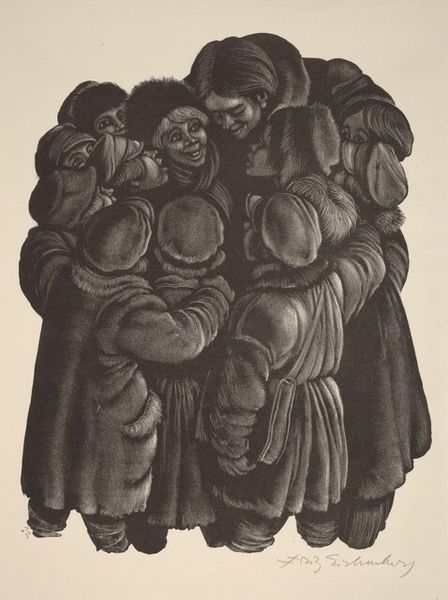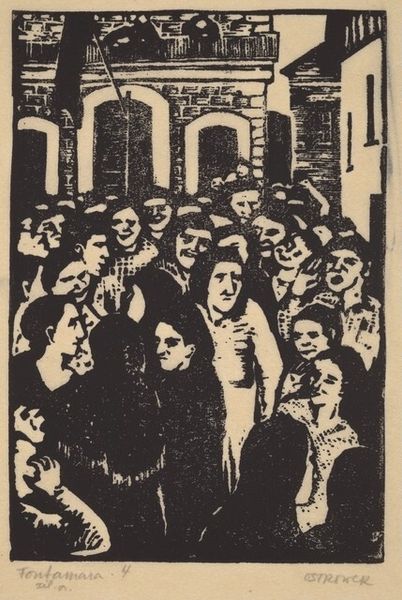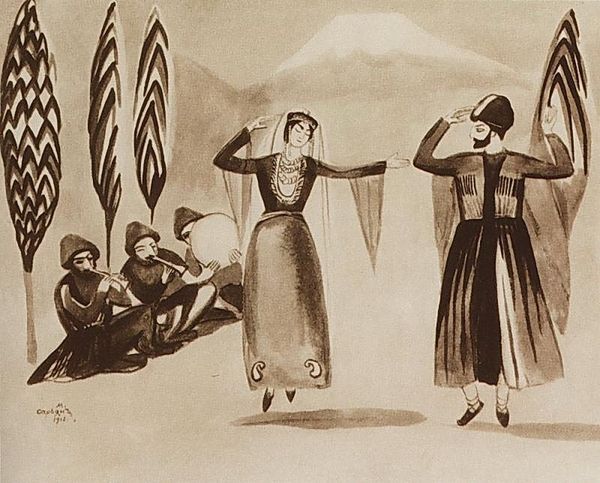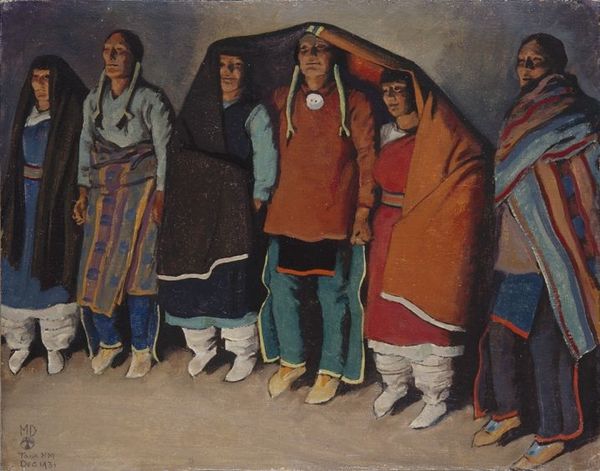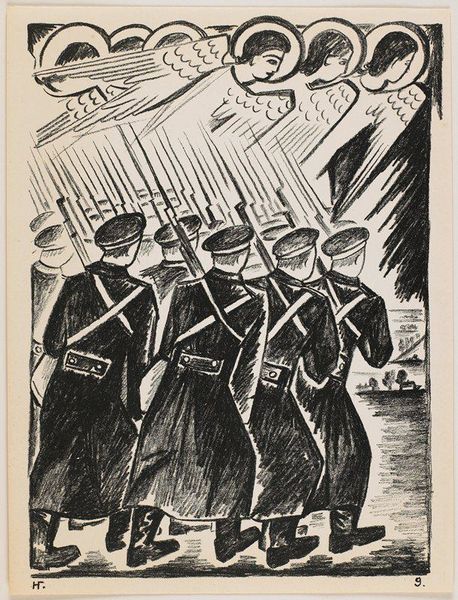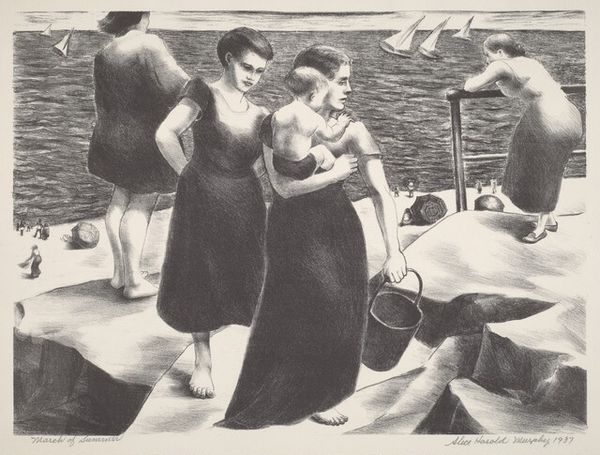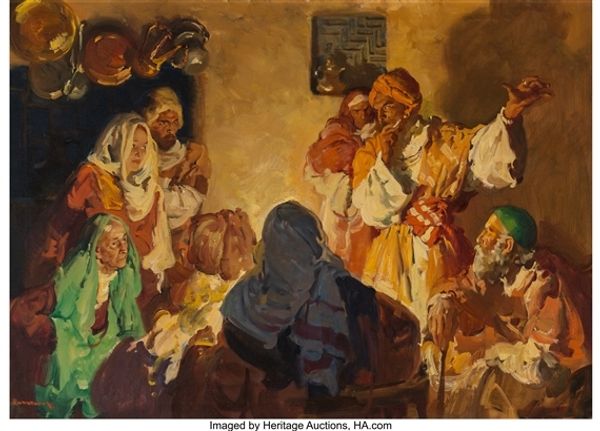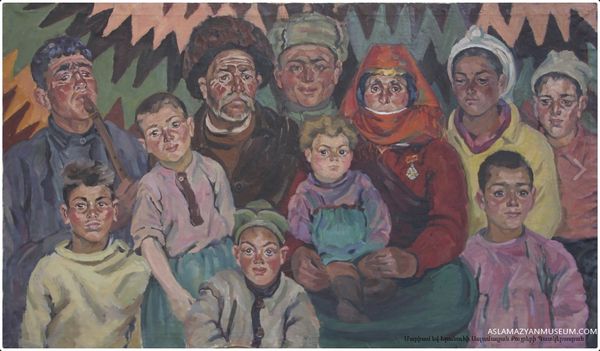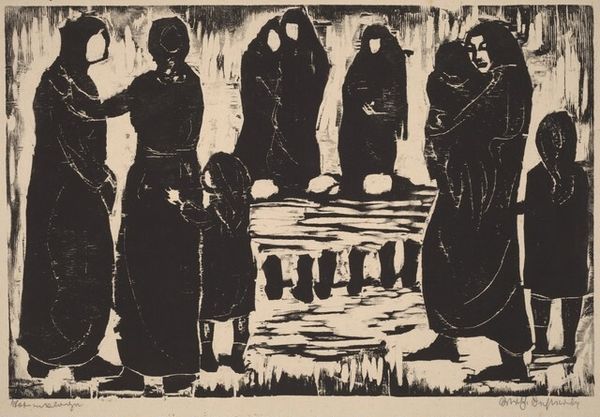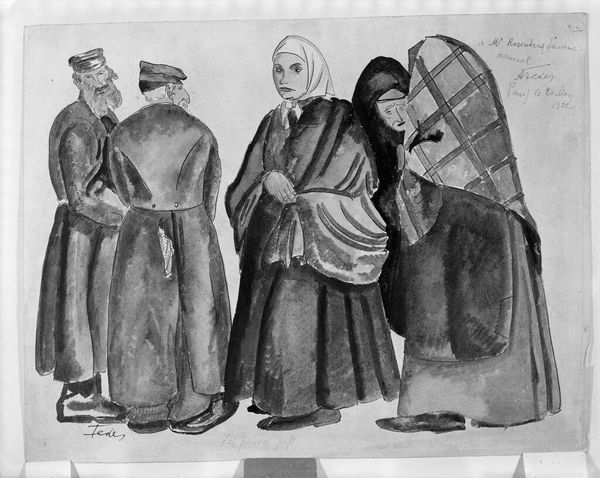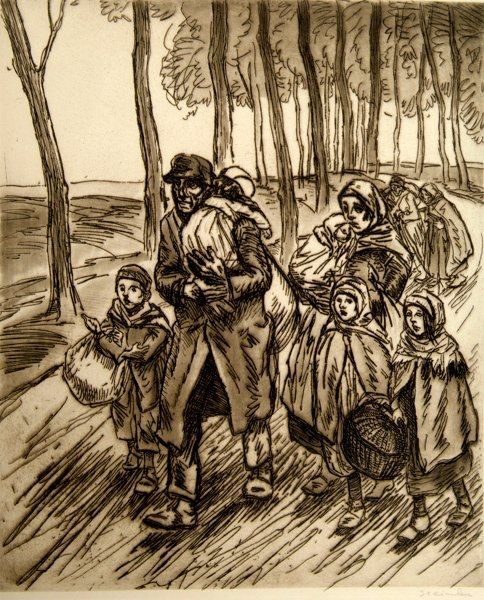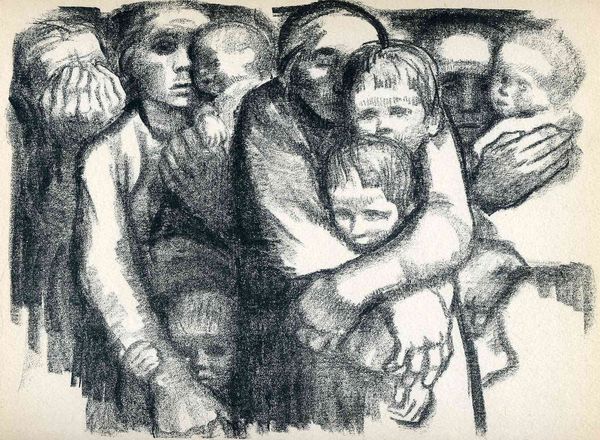
photography, gelatin-silver-print
#
portrait
#
african-art
#
photography
#
historical photography
#
postcolonial-art
#
group-portraits
#
gelatin-silver-print
#
history-painting
Dimensions: image: 9.3 × 13.9 cm (3 11/16 × 5 1/2 in.) sheet: 10.4 × 15.2 cm (4 1/8 × 6 in.)
Copyright: National Gallery of Art: CC0 1.0
Curator: This photograph, "First Jewish Slave Girls Camp Liberated," a gelatin silver print from 1945 by Fred Ramage, is striking. The composition is simple – a group portrait. What jumps out at you initially? Editor: It's the... lightness, despite the obviously heavy subject matter. The women are smiling, even pointing at what I assume are concentration camp tattoos. What can you tell me about the materials, about the production of such a photo under these circumstances? Curator: The very act of producing this photograph speaks volumes. Think about the resources required: the camera, the film, the darkroom materials, and the labor involved in processing and printing it. Photography at this time wasn’t easily accessible, and so its existence is inextricably linked to its socioeconomic environment. This suggests a calculated, supported act, moving the focus beyond simply a documentation to consider it as active witnessing, even intervention. What do you make of the subjects and context combined? Editor: It forces me to consider photography not just as a reflection of reality, but as a manufactured product with agency. Their act of willingly revealing these identifying marks - literally "wearing" the sign of their former enslavement – speaks to how photography shapes, perhaps even constructs identity in this moment of liberation. Curator: Exactly. What does the materiality of this photograph and its creation suggest about power, witnessing, and the transition from enslaved to free? The scars and tattoos, often viewed with abhorrence by the perpetrators, are viewed here by the women, now freed, with a clear message about not forgetting. Editor: I hadn’t considered the photograph itself as an active participant in this narrative, more than the image depicted within its boundaries, but how that photo became reality as an intentional and complex construction, requiring both resources and a socio-historical setting, in which, most importantly, all subjects seem actively complicit and cooperative with Ramage. Thank you for shifting my focus. Curator: And thank you for prompting me to think about what we truly "consume" when we look at photographs of this period, and perhaps, also re-consider the perspective that these women may have intended by their collaboration in Ramage’s making of the artwork.
Comments
No comments
Be the first to comment and join the conversation on the ultimate creative platform.
